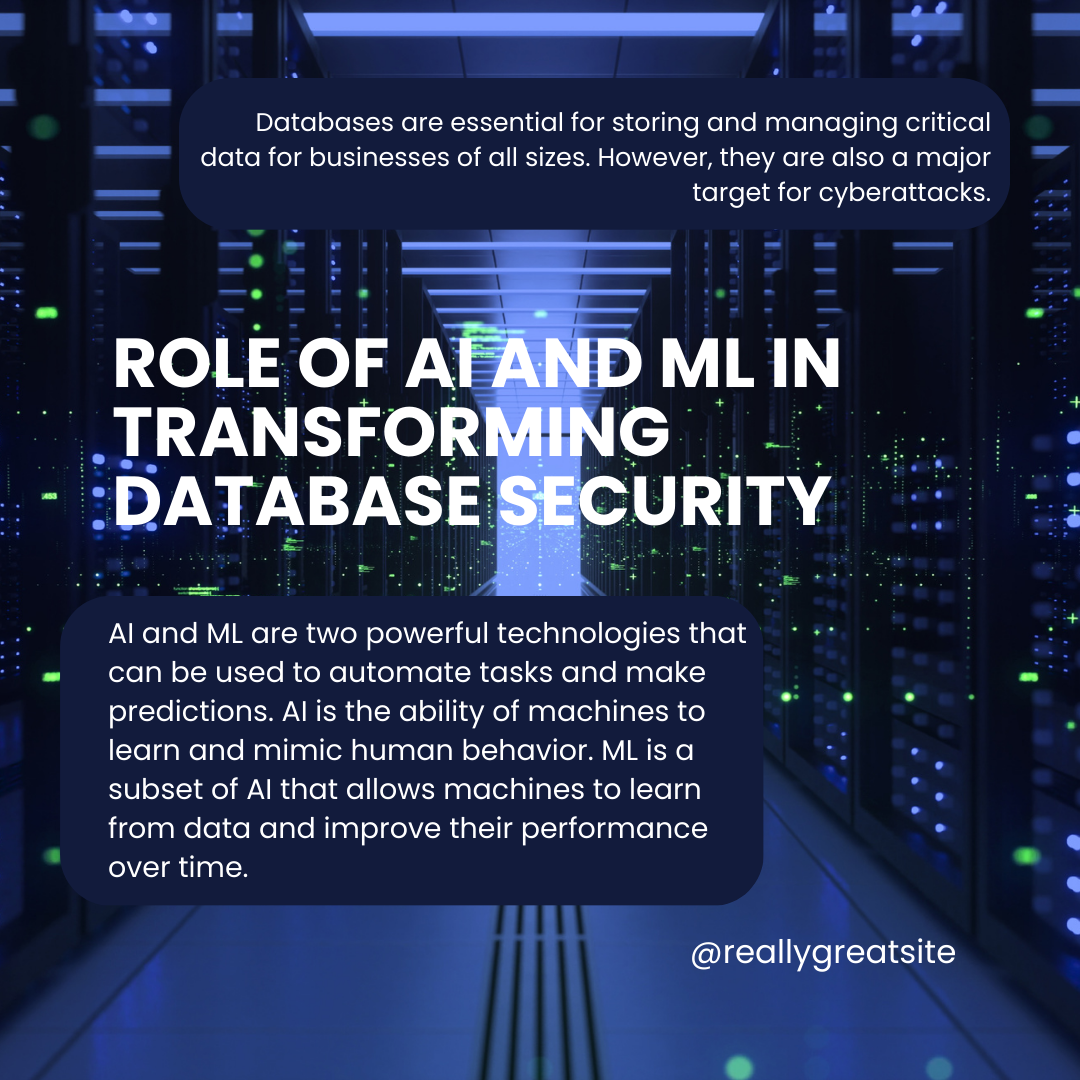
Role of AI and ML in Transforming Database Security
Role of AI and ML in Transforming Database Security
Databases are essential for storing and managing critical data for businesses of all sizes. However, they are also a major target for cyberattacks. In recent years, there has been a growing trend of using artificial intelligence (AI in database security) and machine learning (ML in database security) to improve database security.
What is AI and ML?
AI and ML are two powerful technologies that can be used to automate tasks and make predictions. AI is the ability of machines to learn and mimic human behavior. ML is a subset of AI that allows machines to learn from data and improve their performance over time.
AI and ML in enhancing database security and safeguarding sensitive data
Real-time Threat Detection:
Traditional security measures often rely on predefined rules and signatures, making them less effective against emerging threats. AI and ML enable real-time threat detection by analyzing vast volumes of data, identifying patterns, and detecting anomalies that may indicate potential security breaches. Machine Learning algorithms can learn from past incidents and continuously adapt to new attack vectors, offering more proactive and dynamic defense mechanisms.
Behavior-Based Access Control:
AI-powered database security can implement behavior-based access control. ML models can learn the typical behavior patterns of authorized users and quickly detect any deviations from normal access patterns. If any suspicious activity is identified, the system can automatically trigger alerts or enforce additional authentication measures, preventing unauthorized access attempts.
Anomaly Detection:
AI and ML technologies are adept at identifying unusual patterns in data access and usage. By continuously monitoring database activity, ML models can quickly detect anomalies that might indicate malicious activities, such as data exfiltration attempts or unauthorized data modifications. This early warning system helps security teams respond promptly and mitigate potential risks before they escalate.
Predictive Maintenance:
AI and ML algorithms can play a crucial role in predictive maintenance of database systems. By analyzing performance metrics and historical data, these technologies can predict potential failures, identify weak points, and recommend proactive measures to enhance database security and prevent disruptions.
Database Encryption and Tokenization:
AI-driven encryption and tokenization solutions offer enhanced protection for sensitive data stored in databases. Machine Learning models can analyze the data and apply the most appropriate encryption methods to safeguard information at rest and in transit. Tokenization can also be employed to replace sensitive data with non-sensitive placeholders, reducing the risk of unauthorized access.
Automated Patch Management:
Maintaining up-to-date software and security patches is critical for protecting databases from known vulnerabilities. AI can automate the patch management process by analyzing the impact of patches on the database environment, prioritizing critical updates, and scheduling non-disruptive installation times.
How can AI and ML be used to improve database security?
AI and ML can be used to improve database security in a number of ways, including:
- Identifying and predicting threats: AI and ML can be used to analyze large amounts of data to identify potential threats to databases. This can help to prevent attacks before they happen.
- Detecting intrusions: AI and ML can be used to monitor databases for signs of intrusion. This can help to identify attacks that have already occurred.
- Responding to incidents: AI and ML can be used to automate the response to security incidents. This can help to reduce the time it takes to contain and recover from attacks.
- Enforcing security policies: AI and ML can be used to enforce security policies on databases. This can help to ensure that databases are properly protected.
Benefits of using AI and ML for database security:
There are a number of benefits to using AI and ML for database security, including:
- Increased accuracy: AI and ML can be used to identify and predict threats with greater accuracy than traditional security methods.
- Reduced false positives: AI and ML can be used to reduce the number of false positives, which can save time and resources.
- Automated response: AI and ML can be used to automate the response to security incidents, which can help to reduce the time it takes to contain and recover from attacks.
- Improved compliance: AI and ML can be used to help organizations comply with security regulations.
Challenges of using AI and ML for database security:
There are also a number of challenges to using AI and ML for database security, including:
- Data requirements: AI and ML models require a large amount of data to train. This can be a challenge for organizations that do not have a lot of data.
- Complexity: AI and ML models can be complex to develop and deploy. This can be a challenge for organizations that do not have the expertise to do so.
- Cost: AI and ML can be expensive to implement. This can be a challenge for organizations with limited budgets.
AI and ML are powerful technologies that can be used to improve database security. However, there are also challenges to using these technologies. Organizations that are considering using AI and ML for database security should carefully consider the benefits and challenges before making a decision.
